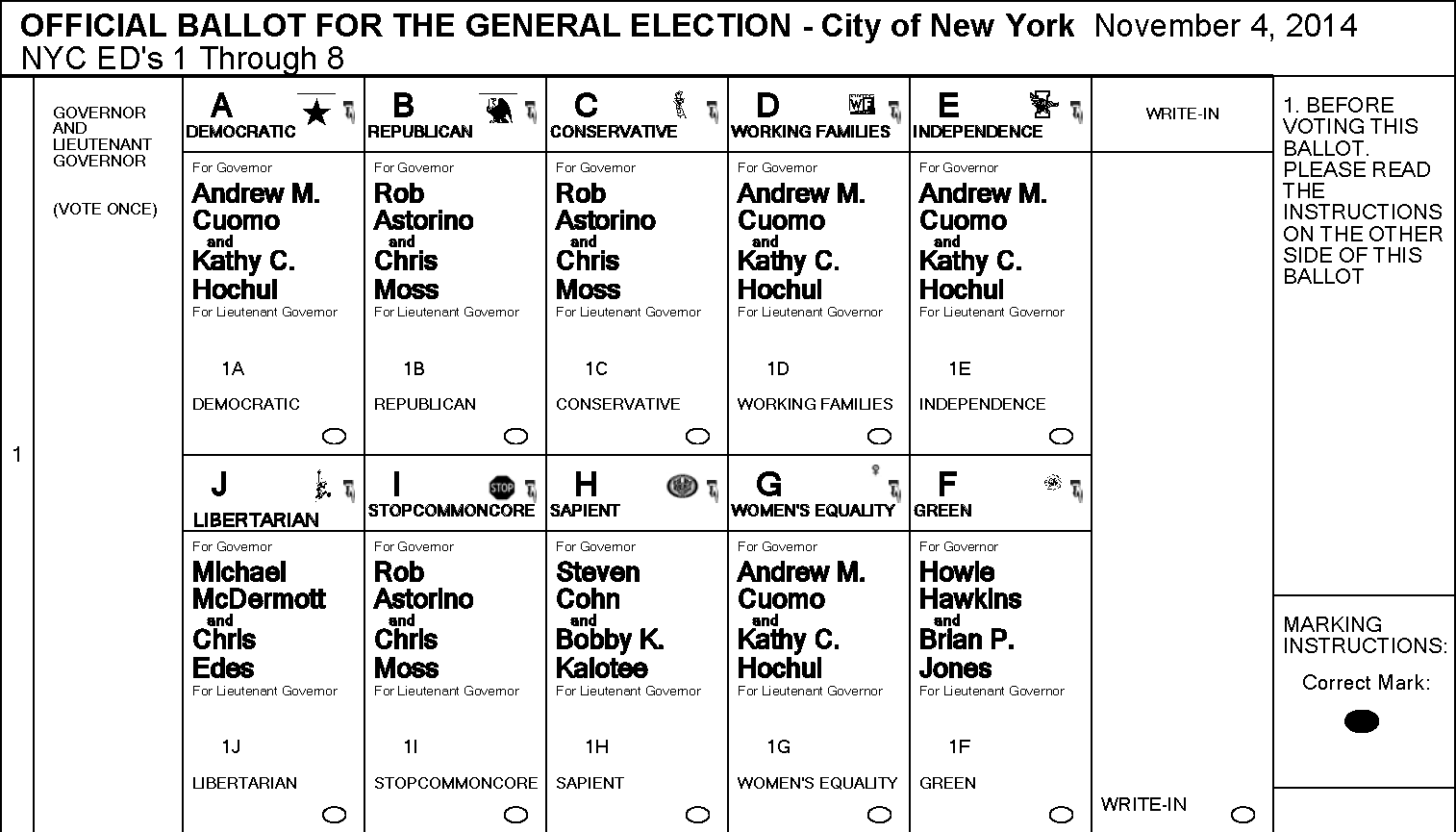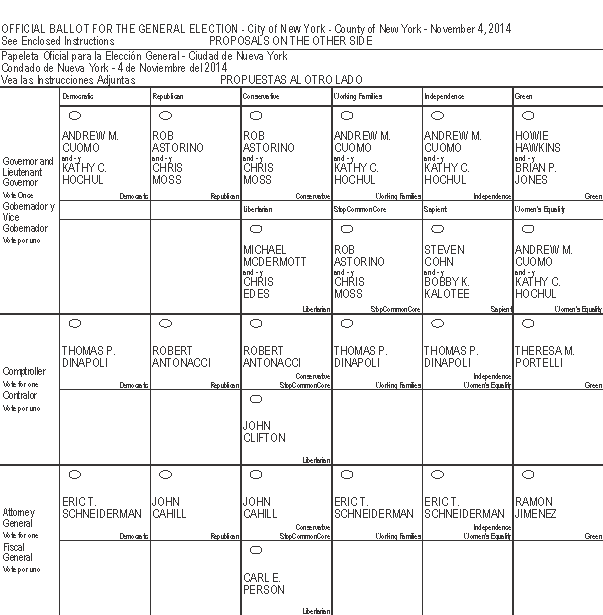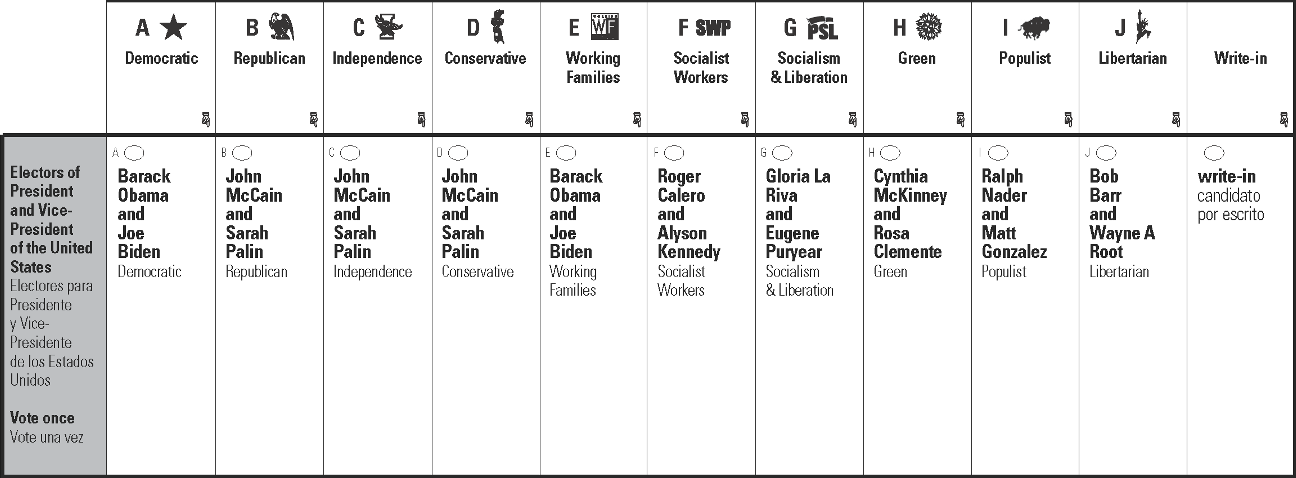The New York City Board of Elections did it again. On this year’s ballot, candidates for governor will be on two rows, which can cause confusion and mistakes. Worse, the ballot is designed in a way to prevent confusion for those who want to cast votes on the Democratic or Republican line, and cause confusion (and lost votes) for those who want to vote for minor parties.
Here’s why that’s a problem.
In past elections, the Brennan Center has highlighted the problems caused by confusingly designed ballots — and in particular, confusing designs in New York. This poor design increases the risk of lost or misrecorded votes — and that risk is even greater for particular groups, including low-income voters and the elderly. New York City is a large jurisdiction with a recent history of poorly designed ballots that are especially prone to “overvotes,” which are when a voter (almost always accidentally) selects more than one candidate for the same office.
As detailed in an October 23 letter from the Brennan Center to the New York City Board of Elections, the city’s 2014 general election ballot is again difficult to read. The city took the state’s sample ballot and changed it in a way that makes it much more likely that those who vote for one of the minor parties for governor will overvote.
This is the sample ballot the New York State Board of Elections sent to the city Board this fall after it certified the candidates for this year’s ballot. There are 10 candidates for governor split into two rows of five.

The New York City Board, made up entirely of Democrats and Republicans, changed this ballot. Understanding that many voters choose to vote a “straight ticket” (for instance, all Democrats or all Conservative or Green Party candidates), they made sure Democrats and Republicans didn’t share their columns with any other party.

As a result, there is no risk that someone voting a straight ticket for Democrats or Republican will overvote. By contrast someone voting a straight ticket for the Conservative, Working Families, or other minor parties may indeed overvote. That’s particularly true because the City Board has done such a poor job of making clear where one contest ends and another begins. That plainly puts minor political parties like the Conservative Party and the Working Families Party at a disadvantage — and the city has no justification for doing so.
The city could have avoided this problem entirely by adopting a sensible, clear ballot design, like the concept that the Brennan Center and visual design experts proposed two years ago in Better Design, Better Elections:

As it happens, this is similar to the design adopted in the rest of the state, where minor parties are not doubled up. Instead, New York City voters will be faced with another confusing ballot this November. That is bad in itself, but those who choose to cast their votes for minor parties will bear a special risk of losing their votes because of a poor design that penalizes everyone who chooses to vote neither Democratic nor Republican.


